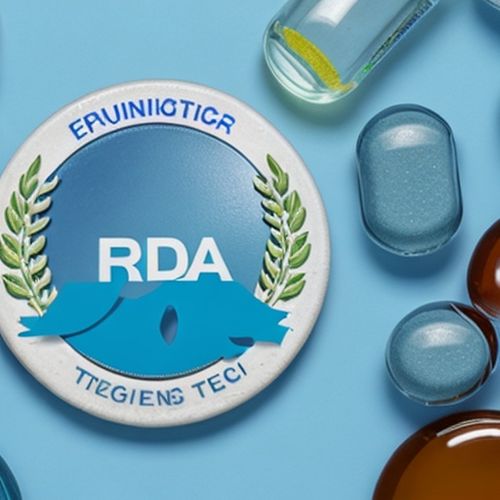The landscape of biomedical research is on the brink of a transformative change. The US Food and Drug Administration (FDA) has announced a significant shift in its approach to drug testing, signaling the beginning of the end for the long-standing requirement that monoclonal antibodies and other drugs be tested on animals. This move, driven by advancements in technology and a growing recognition of more effective, human-relevant methods, marks a paradigm shift in the way we evaluate and approve new treatments. The implications of this decision are far-reaching, promising to accelerate drug development, improve safety, and reduce the reliance on animal experimentation.
The Traditional Role of Animal Testing in Drug Development
For decades, animal models have been a cornerstone of biomedical research. Despite the significant biological differences between animals and humans, many animals share enough similarities to serve as proxies for human diseases and responses. The use of animals in research has been particularly valuable during the early stages of clinical trials, where the potential risks to humans are too high. Animals offer several advantages in the lab: their environments can be tightly controlled, and their shorter lifespans allow for studies that span entire lifetimes and even generations.
However, the limitations of animal models have long been acknowledged. Nonhuman animals, despite their similarities, are not humans. Their biological processes and responses to chemicals can differ significantly, leading to missed opportunities and overestimated results. Dr. Paul Locke, a professor at Johns Hopkins Bloomberg School of Public Health, has highlighted these challenges, noting that while animal models have been useful, they often fall short of the desired success rates. “Nonhuman animals are not humans, so they have different biology, different ways of processing chemicals and other differences, and we miss things, and we can overestimate things when we use them,” Locke said.
The FDA Modernization Act 2.0: Paving the Way for Change
The FDA’s recent announcement is not an isolated decision but rather the culmination of legislative efforts and scientific advancements. The bipartisan FDA Modernization Act 2.0, passed in 2022, amended the Federal Food, Drug, and Cosmetic Act to remove the requirement for animal studies in drug licensure. This legislative change allowed for the use of alternative methods, setting the stage for the FDA’s latest move.
The new approach, as outlined by the FDA, aims to improve drug safety and accelerate the evaluation process. By reducing, refining, or potentially replacing animal testing with a range of alternative approaches, the FDA hopes to lower research and development (R&D) costs and ultimately reduce drug prices. The agency plans to update its guidelines, incentivizing companies that submit strong safety data from non-animal tests by offering streamlined reviews.
The Promise of Alternative Testing Methods
The shift away from animal testing is made possible by significant advancements in technology and alternative testing methods. AI-based computational models, for instance, can predict the toxicity of medicines with remarkable accuracy. These models, powered by vast datasets and sophisticated algorithms, offer a more precise and efficient way to assess potential risks.
Humanoid models and real-world human data also hold great promise. Organoids, small clusters of cells that mimic human organs, provide a more accurate representation of human biology. These advancements allow scientists to study the effects of drugs in a more human-relevant context, reducing the need for animal proxies.
The potential benefits of these alternative methods are substantial. By using AI and organoids, researchers can simulate the human body’s response to drugs more accurately, leading to safer and more effective treatments. This shift not only aligns with ethical considerations but also promises to accelerate the development of new cures and treatments, ultimately benefiting patients.
The Gradual Transition and Its Implications
The FDA’s approach to this change is gradual but deliberate. The agency recognizes that the transition away from animal testing will not happen overnight. However, the decision to start down this path is a significant step in the right direction. Dr. Paul Locke, who has long advocated for this change, sees the FDA’s announcement as a crucial milestone. “It’s really an important step,” he said. “They are going in the right direction.”
The implications of this transition are far-reaching. For scientists and drug developers, the move promises to streamline the drug approval process, reducing the time and resources required to bring new treatments to market. For patients, this means faster access to potentially life-saving therapies. For the scientific community, it represents a shift towards more innovative and effective research methods.
The Ethical and Practical Considerations
The decision to phase out animal testing is not just a scientific advancement but also an ethical one. The use of animals in research has long been a subject of ethical debate, with concerns about animal welfare and the moral implications of using living beings for experimental purposes. By reducing the reliance on animal models, the FDA’s move addresses these ethical concerns while also promoting more efficient and effective research practices.
From a practical standpoint, the shift towards alternative testing methods is expected to reduce R&D costs. Animal studies are expensive and time-consuming, and the use of AI and organoids offers a more cost-effective approach. This reduction in costs could ultimately lead to lower drug prices, making treatments more accessible to patients.
A New Era in Drug Development
The FDA’s announcement marks the beginning of a new era in drug development. The shift away from animal testing represents a significant advancement in the way we evaluate and approve new treatments. By embracing alternative methods such as AI and organoids, the FDA is paving the way for safer, more effective, and more efficient drug development.
This change is not just a scientific milestone but also an ethical one. By reducing the reliance on animal models, the FDA is addressing long-standing concerns about animal welfare while also promoting innovation and efficiency in research. The transition will be gradual, but the direction is clear: towards a future where drug development is more human-relevant, more cost-effective, and more ethical.
As we celebrate this important step, we must also recognize the ongoing efforts of scientists, policymakers, and advocates who have worked tirelessly to bring about this change. The journey towards a more efficient and ethical approach to drug development is far from over, but the FDA’s announcement is a powerful testament to the progress we have made and the potential for a brighter future in medicine.

By Samuel Cooper/Apr 16, 2025

By James Moore/Apr 16, 2025

By Sophia Lewis/Apr 16, 2025

By Michael Brown/Apr 16, 2025

By Christopher Harris/Apr 16, 2025

By Natalie Campbell/Apr 16, 2025

By George Bailey/Apr 16, 2025

By Thomas Roberts/Apr 16, 2025

By Natalie Campbell/Apr 16, 2025

By John Smith/Apr 16, 2025

By Emma Thompson/Apr 15, 2025

By Lily Simpson/Apr 15, 2025

By Noah Bell/Apr 15, 2025

By Victoria Gonzalez/Apr 15, 2025

By Benjamin Evans/Apr 15, 2025

By Joshua Howard/Apr 15, 2025

By Daniel Scott/Apr 15, 2025

By Amanda Phillips/Apr 15, 2025

By James Moore/Apr 15, 2025

By Grace Cox/Apr 15, 2025